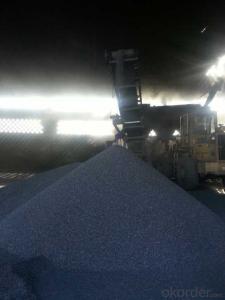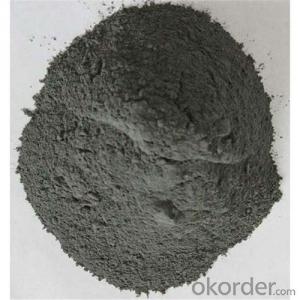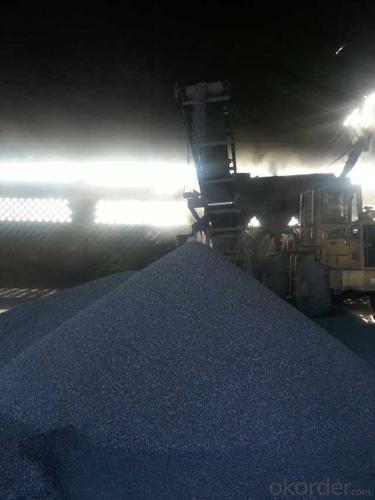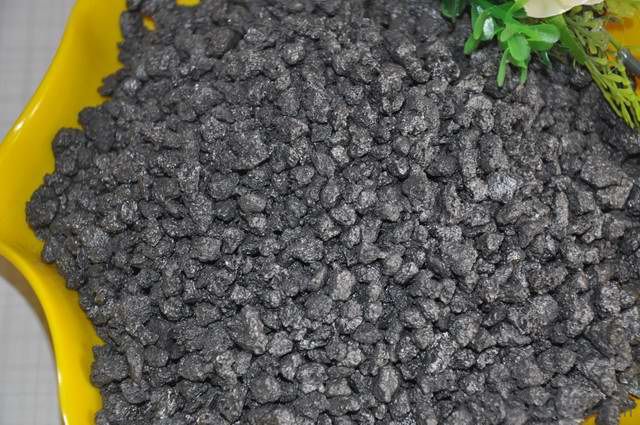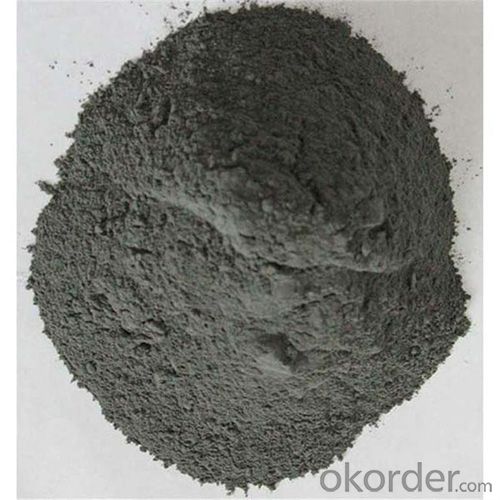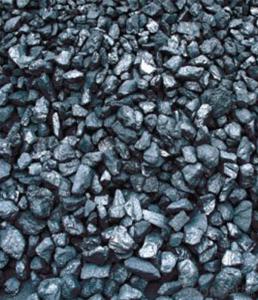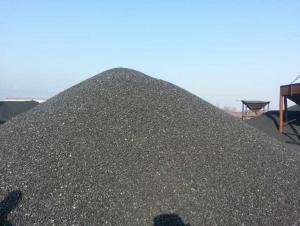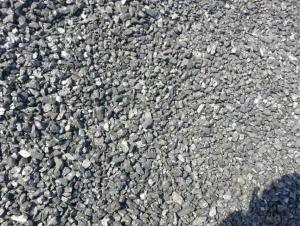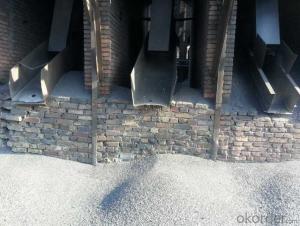Carbon Additive FC82-90 with Good and Stable Quality
- Loading Port:
- Tianjin
- Payment Terms:
- TT OR LC
- Min Order Qty:
- 20 m.t.
- Supply Capability:
- 5000 m.t./month
OKorder Service Pledge
OKorder Financial Service
You Might Also Like
Packaging & Delivery
Carbon Additive FC82-90 with Good and Stable Quality
25kgs/50kgs/1ton per bag or as buyer's request
Specifications
Carbon Additive FC82-90 with Good and Stable Quality
Calcined Anthracite
Fixed carbon: 90%-95%
S: 0.5% max
Size: 0-3. 3-5.3-15 or as request
Advantage and competitive of caclined anthracite:
Carbon Additive FC82-90 with Good and Stable Quality
1. strong supply capability
2. fast transportation
3. lower and reasonable price for your reference
4.low sulphur, low ash
5.fixed carbon:95% -90%
6..sulphur:lower than 0.3%
General Specification of Calcined Anthracite:
Carbon Additive FC82-90 with Good and Stable Quality
| FC | 90 | 88 | 85 | 83 | 82 |
| ASH | 8.5 | 10 | 12 | 14 | 15 |
| V.M. | 1.5 | 2 | 3 | 3 | 3 |
| S | 0.35 | 0.5 | 0.5 | 0.5 | 0.5 |
| MOISTURE | 0.5 | 1 | 1 | 1 | 1 |
Pictures
Carbon Additive FC82-90 with Good and Stable Quality

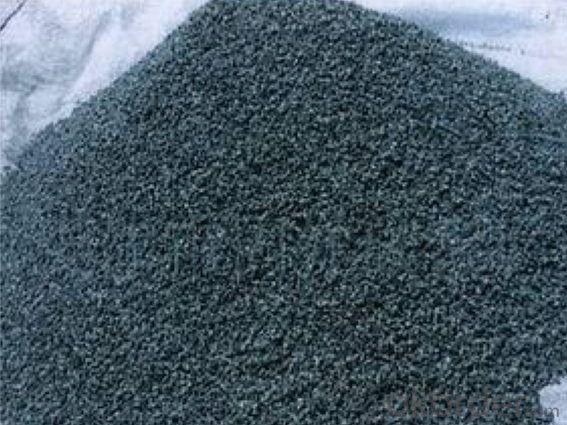
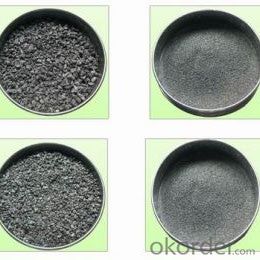
Carbon Additive FC82-90 with Good and Stable Quality
Advantage:
1.High quality and competitive price.
2.Timely delivery.
3.If any item you like. Please contact us.
Your sincere inquiries are typically answered within 24 hours.
- Q: What are carbon credits and how do they work?
- Carbon credits are a market-based approach to reducing greenhouse gas emissions. They work by assigning a value to the reduction or removal of one metric ton of carbon dioxide or its equivalent (CO2e) from the atmosphere. These credits represent the right to emit a specific amount of greenhouse gases and can be traded or sold on the carbon market. The concept behind carbon credits is to provide an incentive for companies, organizations, or individuals to reduce their emissions. By setting a price for carbon emissions, it encourages businesses to invest in cleaner technologies and practices to offset their carbon footprint. This leads to a reduction in overall greenhouse gas emissions, contributing to the global effort to combat climate change. To obtain carbon credits, organizations undertake projects that reduce or remove greenhouse gas emissions. These projects can include renewable energy installations, energy efficiency improvements, afforestation (planting trees), or investing in clean development mechanisms in developing countries. Each project is assessed and verified by an independent third party to ensure its legitimacy and the actual reduction in emissions. Once a project is approved and verified, it is assigned a specific number of carbon credits based on the amount of emissions it has reduced or removed. These credits can then be sold on the carbon market to companies or individuals looking to offset their own emissions. The buyers can use these credits to compensate for their own emissions, effectively canceling out their carbon footprint. The carbon market provides a mechanism for the buying and selling of carbon credits, allowing for a flexible and efficient way to address climate change. The price of carbon credits can vary depending on supply and demand dynamics, as well as the stringency of emission reduction targets set by governments or global agreements. Overall, carbon credits play a vital role in incentivizing emission reduction activities and promoting sustainable practices. They provide a financial mechanism for businesses to invest in cleaner technologies while contributing to the global effort to mitigate climate change.
- Q: What do you stand for?Tar, smoke, nicotine, and carbon monoxide. What do you mean? What's the size of the smoke, or the size of the smoke? What's the connection? Smoking is harmful, so how do you choose to smoke smaller cigarettes?
- The smoke was in the size of a smoker is refers to the amount of nicotine. The smoke is enough to mouth after the majestic. Enough cool,A novice at it. I think most of the carbon monoxide content. Carbon monoxide content is high after the head halo. The novice, this must be kept large. Tar, tar that smoke burning more fully the feeling in the mouth sweet, sweet fragrance..When is the strength of cigarettes and their taste.
- Q: What is the difference in carbon content of low carbon steel, medium carbon steel and high carbon steel?
- The carbon content of high carbon steel (AISI1055 ~ 1095) is 0.60% to 1.03%, manganese content is 0.30% to 0.90%, phosphorus content is not more than 0.04%, sulfur content is not more than 0.05%.
- Q: What are the impacts of carbon emissions on the stability of mangroves?
- Carbon emissions have significant impacts on the stability of mangroves. Increased carbon dioxide levels in the atmosphere contribute to global warming and subsequent sea level rise, which directly affects mangrove ecosystems. Rising sea levels reduce the ability of mangroves to absorb wave energy and protect coastlines, making them more vulnerable to erosion and storm damage. Additionally, higher carbon dioxide concentrations can impair the growth and development of mangroves, potentially leading to reduced biomass and overall ecosystem productivity. Therefore, carbon emissions pose a threat to the stability and resilience of mangrove ecosystems.
- Q: Why does the carbon content of steel increase and the mechanical properties change?
- 3, according to the forming method classification: (1) forging steel; (2) cast steel; (3) hot rolled steel; (4) cold drawn steel4., according to chemical classification(1): A. carbon steel low carbon steel (C = 0.25%); B. (C = 0.25~0.60%) in carbon steel high carbon steel; C. (C = 0.60%).(2): A. alloy steel, low alloy steel (alloy element content is less than or equal to 5%) B. alloy (5~10% alloy element content, high alloy steel (C.) alloy element content > 10%).5. Classification according to metallographic structure(1) annealed state of A. eutectoid steel (ferrite + Zhu Guangti), B. eutectoid steel (Zhu Guangti), C. eutectoid steel (Zhu Guangti + cementite), D., bainitic steel (Zhu Guangti + seepage body)(2) normalizing condition: A. pearlitic steel; B. bainitic steel; C. martensitic steel; D. austenitic steel(3) no phase change or partial phase change occurs6, according to smelting method classification(1) according to the kind of furnaceA.: open hearth steel (a) acid open hearth steel; (b) basic open hearth steel.B. converter steel: (a) the Bessemer steel; (b) basic Bessemer steel. Or (a) bottom blown converter steel; (b) (c) side blown converter steel; BOF steel.C. electric furnace steel: electric arc furnace (a) steel; steel electroslag furnace (b); (c) induction furnace steel; (d) vacuum consumable steel; (E) electron beam furnace.(2) according to the degree of deoxidization and pouring systemA. boiling steel; B. semi killed steel; C. killed steel; D. special killed steel
- Q: How are carbon nanotubes used in various applications?
- Carbon nanotubes are used in various applications due to their unique properties. They are used in electronics and semiconductors for their high conductivity, in energy storage devices for their high surface area and lightweight nature, and in medicine for drug delivery and imaging purposes. Additionally, carbon nanotubes find applications in materials science, aerospace engineering, and environmental remediation, among others, showcasing their versatility and potential impact across multiple fields.
- Q: What are the consequences of increased carbon emissions on political stability?
- Increased carbon emissions can have significant consequences on political stability. Firstly, it can lead to environmental degradation and natural disasters such as extreme weather events, rising sea levels, and food and water scarcity. These disasters can disrupt economies, displace populations, and create social unrest, ultimately straining political systems. Additionally, carbon-intensive industries often rely on fossil fuels, which can lead to economic disparities and inequality, further fueling social and political tensions. The resulting conflicts over resources, migration, and access to basic needs can undermine political stability and exacerbate existing political challenges. Overall, increased carbon emissions contribute to a range of environmental, economic, and social factors that can erode political stability at local, national, and global levels.
- Q: What is the thickness of carbon fiber heating?
- A carbon fiber electric heating installation including adiabatic reflective material, galvanized iron, carbon fiber heating cable, cement layer, floor tile or wood flooring and other parts, generally about reflective thermal insulation material 2cm, galvanized iron net and carbon fiber heating cable 1cm, cement layer 2-3cm, tile or wood floors 2cm in general, add up to 7, 8cm. Insulation reflective material is insulation, galvanized iron mesh, cement layer is to protect cable, carbon fiber heating cable is the core component of carbon fiber heating system, play a role in heating.Two, the use of carbon fiber electric heating carbon fiber heating heating cable as the main part, according to the inherent characteristics of the carbon materials, and textile materials with porous and capricious, multi-faceted, the ends of pressure conductive, electric energy can be quickly converted into heat, by far infrared radiation heat to achieve the heating effect, this is the carbon fiber electric heating principle. Carbon fiber electric heating and electric heating are essentially different, the ordinary electric heating is dependent on the resistance wire heating, and the conduction mode of heat conduction, the disadvantage is the electric energy into heat energy conversion rate is low carbon fiber electric heating.
- Q: Is carbon monoxide good for people?
- Carbon monoxide is a common poison, but trace use is good for organ transplants. British researchers have recently developed a new method that can effectively use carbon monoxide to help transplant organs survive, while avoiding the risk of carbon monoxide poisoning.Excessive inhalation of carbon monoxide poisoning will lead to death, carbon monoxide into the human body, and soon the hemoglobin in blood combined with the formation of carboxyhemoglobin, causes red blood cells to reduce the oxygen carrying, the tissue hypoxia in vivo. The cardiac and central biblical system is the most sensitive to hypoxia and the earliest affected. In the air of carbon monoxide concentration reached 117 mg / M 3, people can feel headache, vertigo: up to 292.5 mg / M 3 symptoms; up to 582.5 mg / M 3 will be nausea and vomiting, exhaustion, if not timely rescue can have life risk. When the concentration of carbon monoxide in the air reaches 11700 mg / M 3, a coma occurs; the concentration of carbon monoxide in the air reaches 1170 mg / m. The 3 spoons will soon die.
- Q: How does carbon dioxide affect the pH of soil?
- Carbon dioxide can lower the pH of soil by reacting with water to form carbonic acid, which increases the acidity of the soil.
Send your message to us
Carbon Additive FC82-90 with Good and Stable Quality
- Loading Port:
- Tianjin
- Payment Terms:
- TT OR LC
- Min Order Qty:
- 20 m.t.
- Supply Capability:
- 5000 m.t./month
OKorder Service Pledge
OKorder Financial Service
Similar products
Hot products
Hot Searches
